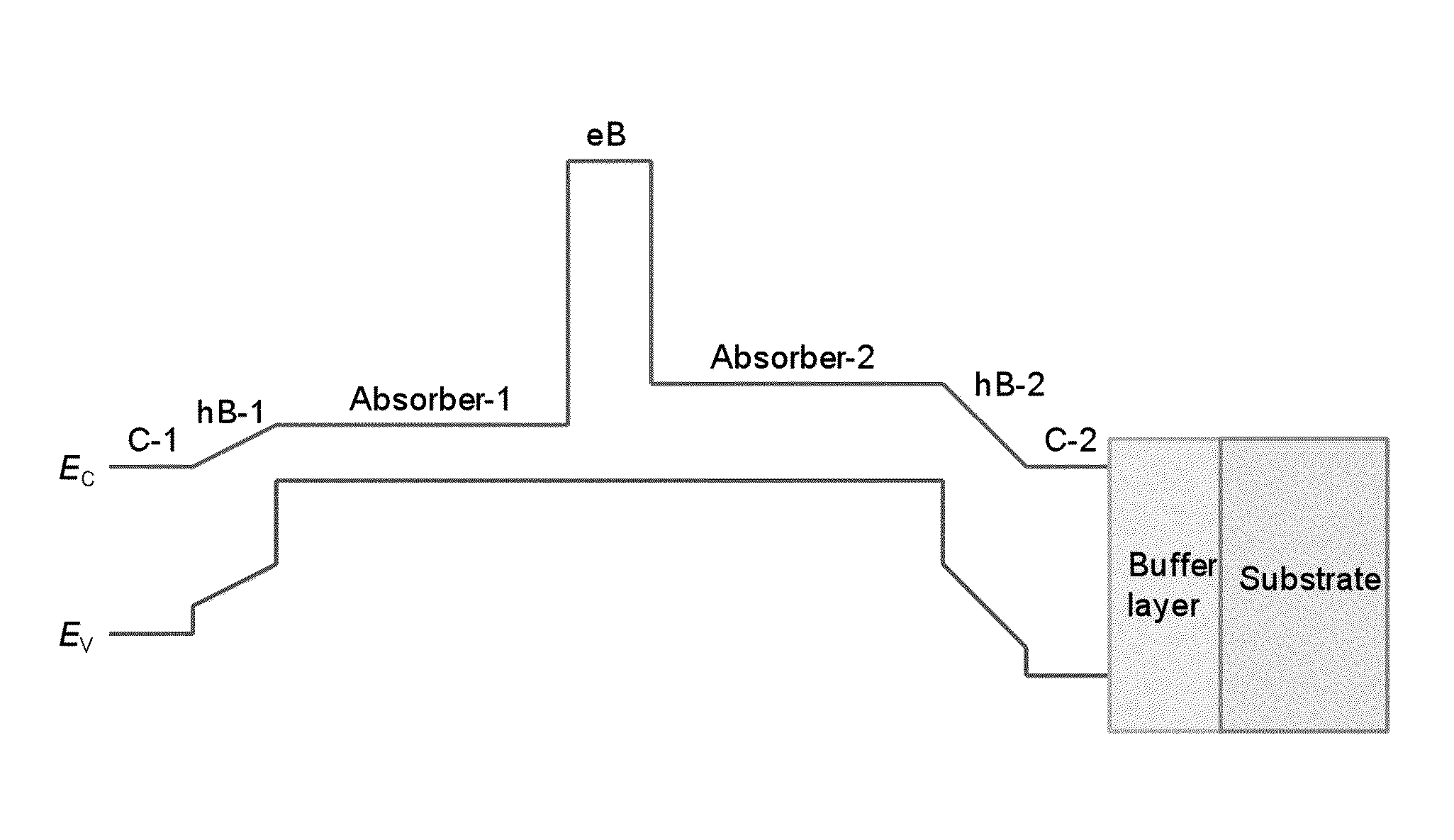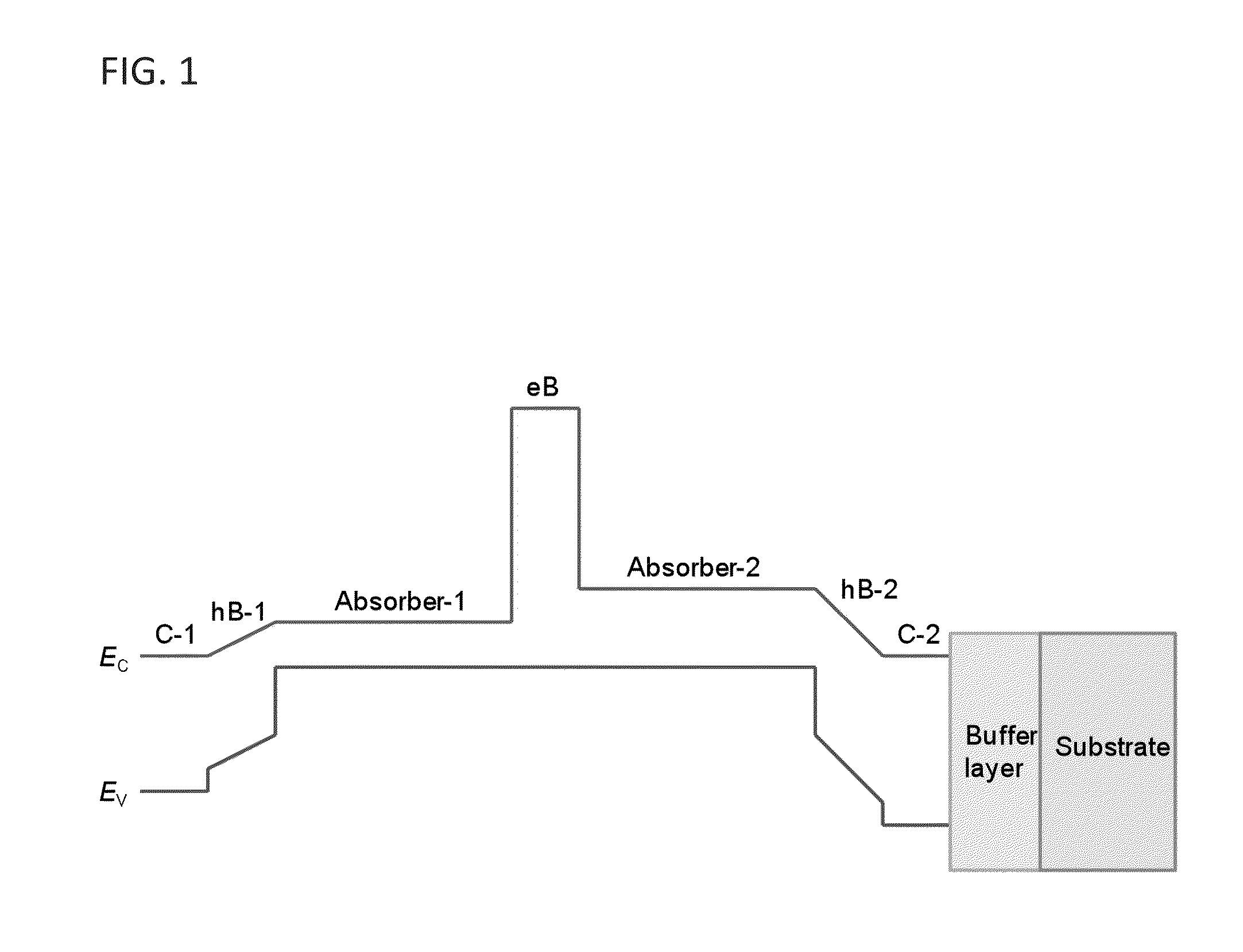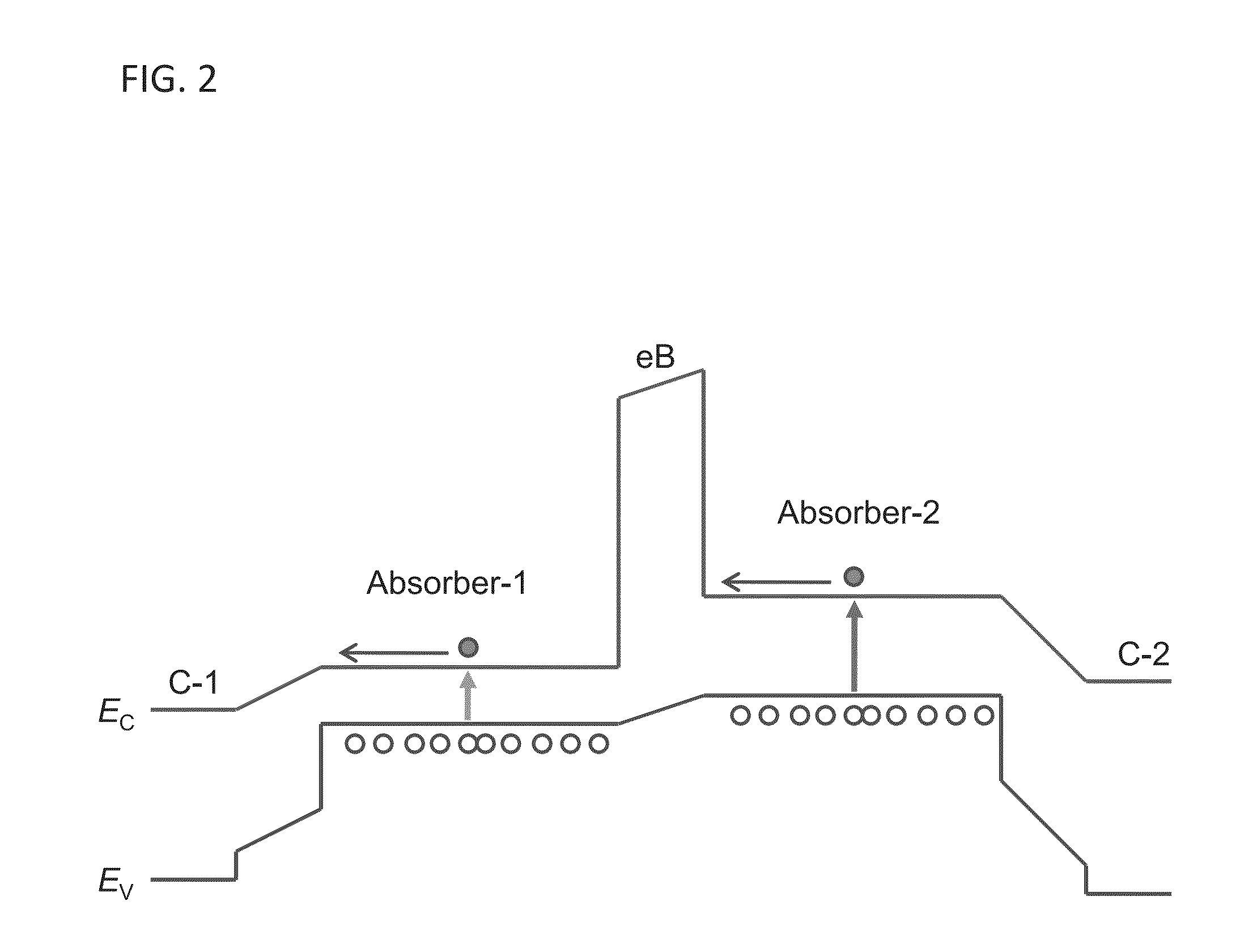Single-band and dual-band infrared detectors
a single-band, infrared detector technology, applied in the field of single-band infrared detectors, can solve the problems of image blurring, pbp structure has its own problems, and holes have more difficulty in diffusing along the perpendicular direction toward the collecting contact than diffusing laterally,
- Summary
- Abstract
- Description
- Claims
- Application Information
AI Technical Summary
Benefits of technology
Problems solved by technology
Method used
Image
Examples
Embodiment Construction
[0058]Bias-switchable dual-band infrared are described in the embodiments set forth herein. As will be described embodiments of the infrared detectors are based on a back-to-back heterojunction diode design. In these embodiments, the detector consists generally of a sequential structure that includes:[0059]a top contact layer,[0060]a unipolar hole barrier layer,[0061]an absorber layer,[0062]a unipolar electron barrier,[0063]a second absorber,[0064]a second unipolar hole barrier, and[0065]a bottom contact layer.
[0066]In addition, as will be discussed in greater detail below, by substantially reducing the width of one of the absorber layers, a single-band infrared detector can also be formed.
Definitions
[0067]An absorber layer or structure, as used herein is a layer of a semiconducting material or materials having a bandgap structure where photons impinging on the material with sufficient energy excite electrons across the material's bandgap to produce photocurrents.
[0068]A unipolar ba...
PUM
 Login to View More
Login to View More Abstract
Description
Claims
Application Information
 Login to View More
Login to View More - R&D
- Intellectual Property
- Life Sciences
- Materials
- Tech Scout
- Unparalleled Data Quality
- Higher Quality Content
- 60% Fewer Hallucinations
Browse by: Latest US Patents, China's latest patents, Technical Efficacy Thesaurus, Application Domain, Technology Topic, Popular Technical Reports.
© 2025 PatSnap. All rights reserved.Legal|Privacy policy|Modern Slavery Act Transparency Statement|Sitemap|About US| Contact US: help@patsnap.com



